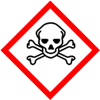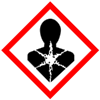Tetrakis Hydroxymethyl Phosphonium Sulfate THPS 75-78% SDS MSDS Sheet |
| Mubychem Limited of USA & India is a pioneer manufacturers suppliers exporters & importers of chemicals including Hydraulic fracturing stimulation & oil well production chemicals, Pharmaceutical excipients, Fragrance & flavor chemicals. Muby Chem Ltd has several manufacturing facilities and toll manufacturers across the globe. We have offices warehouses and representatives in Houston & Midland Texas and Chicago Illinois USA. |
| Our suppliers have accreditations like FDA - GMP-GLP approval, ISO-9001, ISO-22000 HACCP, Kosher & Halal Certification. We offer Commercial Pure Pharmacopoeia Analytical Reagent & Food Grade of Chemicals and do Toll Manufacturing for Oil well drilling fracking fracturing and others. |
MSDS of Tetrakis (Hydroxymethyl) Phosphonium Sulfate THPS
75-78% Manufacturers (It is on this page below)
MSDS of Tetrakis (Hydroxymethyl) Phosphonium Sulfate THPS 20-21% Manufacturers
Specifications of THPS Tetrakis Hydroxymethyl Phosphonium Sulfate Manufacturers
Tetrakis hydroxymethyl phosphonium sulfate THPS -75% SDS MSDS Sheet; Material Safety Data Sheet Tetrakis (hydroxymethyl) phosphonium sulphate
1. Product Identification
Product Name: Tetrakis (Hydroxymethyl) Phosphonium Sulfate Solution (THPS, 75%)
2. Hazards Identification
GHS, Globally Harmonized System Classification in accordance with 29 CFR 1910


Signal Words: Danger
GHS Classification:
Acute toxicity, Oral: Category 3
Acute toxicity, Inhalation: Category 4
Acute aquatic toxicity: Category 3
Hazard Statements:
H301: Toxic if swallowed.
H331 Toxic if inhaled.
H314 Causes severe skin burns and eye damage.
H335: May cause respiratory irritation
H336: May cause drowsiness and dizziness
H370: Causes damage to organs
H402 Harmful to aquatic life.
H412: Harmful to aquatic life with long lasting effects
Precautionary Statements:
P260: Do not breathe dust/fume/gas/mist/vapors/spray.
P262: Do not get in eyes, on skin, or on clothing.
P264: Wash contaminated parts thoroughly after handling.
P270: Do not eat, drink or smoke when using this product.
P271: Use only outdoors or in a well-ventilated area.
P273: Avoid release to the environment.
P280: Wear protective gloves/protective clothing/eye protection/face
protection.
P301+P310: IF SWALLOWED: Immediately call a POSION CENTER or
doctor/physician.
P314: Get medical advice/attention if you feel unwell.
P304+P340: IF INHALED: Remove victim to fresh air and keep at rest in a
position comfortable for breathing.
P302+352: IF ON SKIN: Wash with plenty of soap and water.
P305+351+338: IF IN EYES: Rinse cautiously with water for several minutes.
Remove contact lenses if present and easy to do – continue rinsing.
P360: Rinse immediately contaminated clothing and skin with plenty of water
before removing clothes.
P403 P404: Store in well-ventilated place. Keep container tightly closed.
P501: Dispose of contents/container in accordance with local/national
regulation.
3. Composition/Information on Ingredients
Component: Tetrakis(Hydroxymethyl) Phosphonium Sulfate or THPS
CAS No.: 55566-30-8
Percentage: 70-80% (Typically 75%)
Formula: (C4H12O4P)2O4S
4. First Aid Measures
Inhalation: Remove affected person to fresh air; if normal
breathing has not returned within a few minutes after exposure, get medical
attention.
Skin: Remove contaminated clothing; wash affected area with soap and
water; launder contaminated clothing before reuse. Seek medical attention.
Eyes: Immediately, flush eyes for 15 minutes in clear running water
while holding eyelids open; seek medical attention immediately.
Ingestion: Drink two glasses of water followed by milk, milk of
magnesia or other non-alcoholic liquids; Do not induce vomiting; seek
medical attention immediately.
Physician may treat symptomcaly.
5. Fire Fighting Measures
Flash Point: 96° C (204° F)
Flammable Limits:
LEL: Not Applicable
UEL: Not Applicable
NFPA CLASS: IIIB
General Hazards: Contact with eyes causes immediate severe irritation
of the eye and eyelids. Product will support combustion.
Extinguishing Media: Carbon dioxide, water fog, dry chemical,
chemical foam.
This product would not be expected to burn unless all the water is boiled
away. The remaining organics may be ignitable. Keep containers cool by
spraying with water. Use extinguishing media appropriate for surrounding
fire.
Fire & Explosion Hazard: May evolve oxides of carbon (COx) under fire
conditions. May evolve oxides of phosphorus (POx) under fire conditions. May
evolve oxides of sulfur (SOx) under fire conditions.
In case of fire, wear a full face positive-pressure self contained breathing
apparatus and protective suit. Self - contained respiratory equipment; cool
containers to prevent pressure buildup and possible explosion when exposed
to extreme heat. Caution - material will support combustion!
Unusual Fire and Explosion Hazards: Closed containers of THPS can
explode due to buildup of pressure when exposed to extreme heat.
Hazardous Combustion Products: Products of combustion include smoke,
toxic fumes, oxides of carbon to include carbon monoxide, phosphorous
oxides, phosphine and sulfur oxides.
6. Accidental Release Measures
Tetrakis(Hydroxymethyl) Phosphonium Sulfate or THPS will support combustion. Avoid contact with eyes. Do not wash to sanitary sewer. Large spills - confine spill, soak up with approved absorbent, shovel product into approved container for disposal.
7. Handling and Storage
Keep Tetrakis Hydroxymethyl Phosphonium Sulfate or THPS container closed when not in use; protect containers from abuse; protect from extreme temperatures, open flames. This material will support combustion. Keep this and other chemicals out of reach of children.
8. Exposure Controls/Personal Protection
Engineering Controls: The use of local exhaust ventilation is
recommended to control emissions near the source. Provide mechanical
ventilation of confined spaces. Use corrosion-resistant, explosion-proof
ventilation equipment.
Exposure Limits: ACGIH-TLV 2mg/m3 TWA; OSHA-PEL 2mg/m3
Personal Protection: Respiratory Protection (Specify Type): None
required while threshold limits are kept below maximum allowable
concentrations; if TWA exceeds standard workplace limits, NIOSH approved
respirator must be worn.
Hand Protection: Neoprene, butyl or nitrile rubber gloves with cuffs.
Eye Protection: Chemical safety goggles.
Other Protective Clothing Or Equipment: Apron, or other equipment
should be worn to prevent skin contact, safety eyewash station nearby.
Practice safe workplace habits. Minimize body contact with this, as well as
all chemicals in general.
9. Physical and Chemical Properties
Appearance: Colorless liquid
Odor: Typical odor
Vapor Pressure (MM Hg): 1.7 kPa @ 25C
Vapor Density (Air = 1) : >1
Specific Gravity (water = 1): Varies with assay.
Evaporation Rate (water = 1) : <1
Solubility in Water: Complete
Freezing Point: Not determined
pH: 3 to 5
Boiling Point: 108-109C 229F
Physical State: Liquid
Viscosity: Like that of water
10. Stability and Reactivity
Stability: Tetrakis Hydroxymethyl Phosphonium Sulfate or THPS is
stable at normal temperatures and operating conditions.
Conditions to Avoid: Avoid excessively high temperatures and contact
with alkalis or strong oxidizing agents. Unstable at a high pH whereby it
oxidizes releasing flammable hydrogen gas.
Incompatibilities: Strong Bases & Oxidizing Agent.
Decomposition: Decomposition yields carbon monoxide & dioxide, oxides
of sulfur & phosphorous, formaldehyde, phosphine gas, organophosphine
vapors, & hydrogen.
Polymerization: Polymerization will not occur.
11. Toxicological Information
Eye: Irritation Eye contact may be painful and irritating.
Skin: Irritation Prolonged and repeated skin exposure may be painful
and irritating.
Inhalation: Toxicity Inhalation of this product during manufacturing
may be irritating.
Reproduction: Not evaluated.
Mutagenicity: Not mutagenic in AMES Test or via micronucleus test on
mice.
Carcinogenecity: Not listed as a human carcinogen by OSHA, IARC, ACGIH & NTP
Acute Oral Effects: Oral LD50 – Rats 248 mg/kg.
Acute Inhalation Effect: LC50 Inhalation Rat 5.5mg/14 hours
Acute Dermal Toxicity: Dermal LD50 – Rabbits 2000 mg/kg.
4-Hour Inhalation LC50: – Rats: value is 0.59 mg/l.
12. Ecological Information
Ecotoxicity in water:
96 Hr LC50 Fish: 10.8 mg/L
96 Hr EC50 Algae: 0.2 mg/L
48 Hr EC50 Dania: 19.4 mg/L
Neither COD nor BOD data are available. Biodegradation measured at >20%
within a 28-day period (OECD 302B).
Tetrakis (Hydroxymethyl) Phosphonium Sulfate or THPS is not expected to
bio-accumulate.
Based on hazard characterization, the potential environmental hazard is
Moderate.
13. Disposal Considerations
Dispose of Tetrakis Hydroxymethyl Phosphonium Sulfate or THPS in accordance with Local, State, and Federal Regulations. Consult local, state, or Federal Environmental Protection Agency before disposing of any chemicals.
14. Transport Information
DOT
Proper Shipping Name: Corrosive liquids, toxic, n.o.s. Tetrakis (Hydroxymethyl)
Phosphonium Sulfate
UN#: 2922
Class: 8
Packing Group: Packing Group II
Hazard Label: Corrosive
Hazard Label: Toxic substances.
IATA
Proper Shipping Name: Corrosive liquid, toxic, n.o.s.
Proper Shipping Name: Corrosive liquids, toxic, n.o.s. Tetrakis (Hydroxymethyl)
Phosphonium Sulfate
UN#: 2922
Class: 8
Packing Group: Packing Group II
Hazard Label: Corrosive
Hazard Label: Toxic substances.
15. Regulatory Information
EU ADDITIONAL CLASSIFICATION
Symbol of Danger: C
Indication of Danger: Corrosive.
R: 22-34-43
Risk Statements: Harmful if swallowed. Causes burns. May cause sensitization
by skin contact.
S: 26-36/37/39-45
Safety Statements: In case of contact with eyes, rinse immediately with
plenty of water and seek medical advice. Wear suitable protective clothing,
gloves, and eye/face protection. In case of accident or if you feel unwell,
seek medical advice immediately.
USA CLASSIFICATION AND LABEL TEXT
Indication of Danger: Corrosive.
Risk Statements: Harmful if swallowed. Causes burns. May cause sensitization
by skin contact.
Safety Statements: In case of contact with eyes, rinse immediately with
plenty of water and seek medical advice. Wear suitable protective clothing,
gloves, and eye/face protection. In case of accident or if you feel unwell,
seek medical advice immediately.
UNITED STATES REGULATORY INFORMATION
SARA LISTED: No
TSCA INVENTORY ITEM: Yes
CANADA REGULATORY INFORMATION
WHMIS Classification: This product has been classified in accordance with
the hazard criteria of the CPR.
DSL: Yes
NDSL: No
California Prop 65, Safe Drinking Water and Toxic Enforcement Act of 1986
This product contains a maximum of 0.09% formaldehyde known to the state of
California to cause cancer.
Pennsylvania, the Worker and Community Right-to-Know Act of 1986
This product contains a maximum of 0.09% formaldehyde an Environmental
Hazard and Special Hazardous Substance.
Right to know list of Massachusetts, New Jersey, Pennsylvania: Tetrakis (Hydroxymethyl)
Phosphonium Sulfate
CPR (Canadian Controlled Products Regulations)
This product has been classified in accordance with the hazard criteria of
the Controlled Products Regulations and the MSDS contains all the
information required by the Controlled Products Regulations. WHMIS
Classification: D2B, E.
IDL (Canadian Ingredient Disclosure List)
Components of this product identified by CAS number and listed on the
Canadian Ingredient Disclosure List.
DSL / NDSL (Canadian Domestic Substances List / Non-Domestic Substances
List).
Components of this product identified by CAS number are listed on the DSL or
NDSL, or are otherwise in compliance with the New Substances Notification (NSN)
regulations. Only ingredients classified as "hazardous" are listed in
Section 2 unless otherwise indicated.
EINECS (European Inventory of Existing Commercial Chemical Substances).
Components of this product identified by CAS numbers are on the European
Inventory of Existing Commercial Chemical Substances.
16. Other Information
Disclaimer:
***************************
Our company provides this Tetrakis (Hydroxymethyl) Phosphonium Sulfate or
THPS SDS information contained
herein in good faith but makes no representation as to its comprehensiveness or
accuracy. This THPS or Tetrakis Hydroxymethyl Phosphonium Sulfate MSDS sheet is intended only as a guide
to the appropriate precautionary handling of the material by a properly trained
person using this product. Individuals receiving the information must exercise
their independent judgment in determining its appropriateness for a particular
purpose.
***************************
Suppliers Manufacturers Exporters Importers between USA Canada UAE Europe South Africa Tanzania Kenya Uganda Egypt Nigeria Turkey Mexico Brazil Argentina Chile Dubai China India etc.
Copyright and Usual Disclaimer is Applicable.
If you feed a dog with your hand, it will never bite you. That is the principal difference between a dog and a man.







